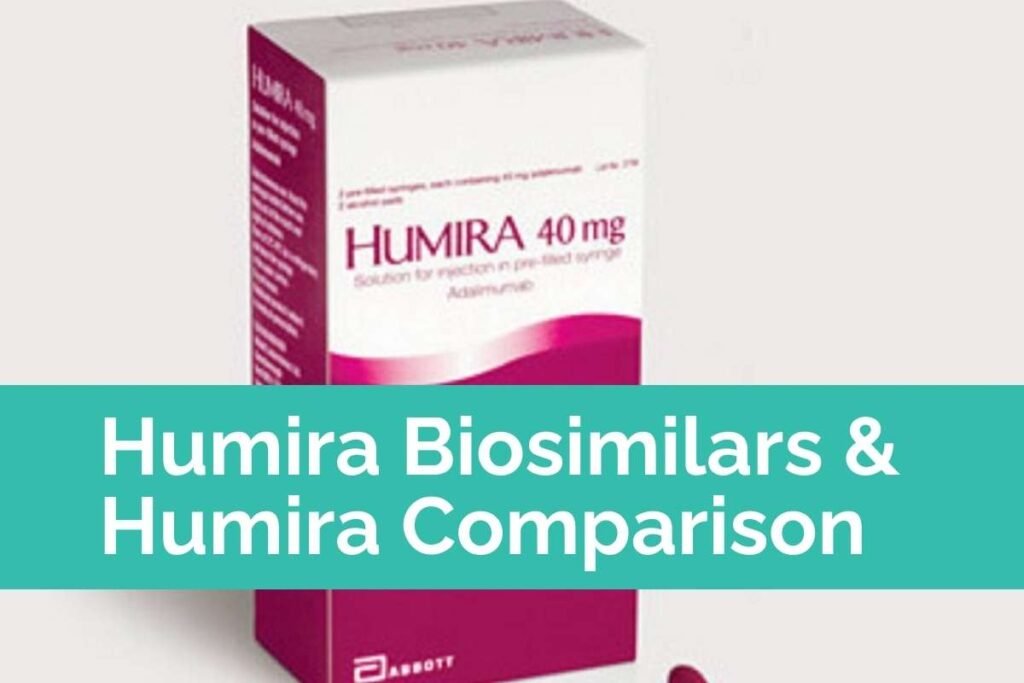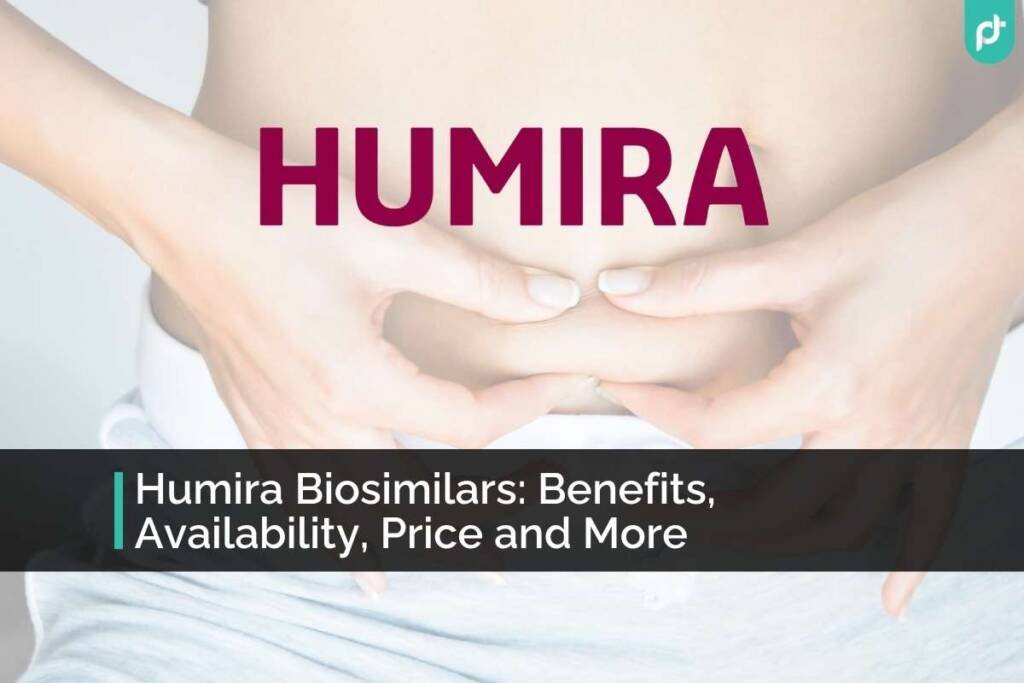In this article, we will give you an overview of Humira biosimilars, including their benefits, availability, prices, and how they compare to Humira. We will also answer some frequently asked questions about Humira biosimilars and provide some tips on how to switch from Humira to a biosimilar safely and smoothly.
Humira is a brand-name medication that contains the active ingredient adalimumab, a type of protein that blocks a substance called tumor necrosis factor (TNF). TNF is involved in causing inflammation and tissue damage in many diseases.
Humira is one of the most widely used and effective treatments for inflammatory conditions, but it also comes with a hefty price tag. According to Drugs.com, the average cost of Humira without insurance is around $6,240 for a carton of two subcutaneous kits (10 mg/0.1 mL). That means it can cost upwards of $96,000 to take Humira for a whole year!
Fortunately, there is some good news for people who need Humira but cannot afford it. In the past few years, several Humira biosimilar versions have been approved and launched in different countries, offering lower-cost alternatives to the original drug. Biosimilars are medicines that are highly similar to an existing biologic medicine (such as Humira) in terms of quality, safety, and effectiveness. Biosimilars are not exact copies of the original biologic, but they have no clinically meaningful differences from it.
What are the benefits of Humira biosimilars?

The main benefit of Humira biosimilars is that they can offer significant cost savings for patients and healthcare systems. According to a report by the RAND Corporation, biosimilars could reduce direct spending on biologic drugs by $54 billion from 2017 to 2026 in the United States alone. That translates to an average of 20% lower prices for biologic drugs.
Another benefit of Humira biosimilars is that they can increase access and availability of biologic treatments for more patients who need them. By offering more choices and competition in the market, biosimilars can also stimulate innovation and improve quality of care.
What are the available Humira biosimilars?
The following table summarizes the names, manufacturers, approval dates, and launch dates of the Humira biosimilars in the United States:
These releases mark the initial introductions of biosimilars for adalimumab following the debut of Amgen’s Amjevita (adalimumab-aato) in January 2023. Alongside these offerings, Hulio (adalimumab-fkjp), Abrilada (adalimumab-aafzb), Abrilada (adalimumab-afzb), Idacio (adalimumab-aacf), and Yuflyma (adalimumab-aaty) are launched in July 2023.

On July 1, Cyltezo, the inaugural interchangeable biosimilar to Humira, officially launched in the U.S. market. This event marked the beginning of a wave of new releases this month, with six different biosimilars entering the market for what was previously the highest-selling medication in the country. Cyltezo is sanctioned for the treatment of various conditions, including moderate-to-severe Crohn’s disease, ulcerative colitis, chronic plaque psoriasis, rheumatoid arthritis, polyarticular juvenile idiopathic arthritis, psoriatic arthritis, ankylosing spondylitis, and hidradenitis suppurativa.
| Biosimilar | Company | Approval Date | Discount from Humira | Launch Date |
| Amjevita (adalimumab-atto) | Amgen | September 23, 2016 | 5%; 55% | January 31 2023 |
| Cyltezo (adalimumab-adbm) | Boehringer Ingelheim | August 25, 2017 | 5%-7% | July 1 2023 |
| Hadlima (adalimumab-bwwd) | Organon/ Samsung Bioepis | July 23, 2019 | 85% | July 1 2023 |
| Hulio (adalimumab-fkjp) | Biocon | September 9, 2020 | 5%; 85% (unbranded) | July 3 2023 |
| Hyrimoz (adalimumab-adaz) | Sandoz | October 30, 2018 | 5%; 81% (unbranded) | July 1 2023 |
| Idacio (adalimumab-aacf) | Fresenius Kabi | December 14, 2022 | 5% | July 3 2023 |
| Yuflyma (adalimumab-aaty) | Celltrion | February 5, 2021 | 5% | July 2 3023 |
| Yusimry (adalimumab-aqvh) | Coherus | December 20, 2021* | 84%-85% | July 3 2023 |
In Europe, there are six approved and marketed Humira biosimilars, namely Amgevita (Amgen), Imraldi (Samsung Bioepis), Hulio (Mylan/Fujifilm Kyowa Kirin Biologics), Hyrimoz (Sandoz), Idacio (Fresenius Kabi), and Kromeya (Hexal). These biosimilars became available in Europe in October 2018, after Humira’s patent protection expiration.
In Japan, there are four approved and marketed Humira biosimilars, namely Amgevita (Amgen), Imraldi (Samsung Bioepis), Hulio (Mylan/Fujifilm Kyowa Kirin Biologics), and YLB113 (Yoshindo). These biosimilars became available in Japan in December 2018, after Humira’s data exclusivity expiration.
What are the prices of Humira biosimilars?
The prices of Humira biosimilars vary depending on the country, the manufacturer, and the payer. However, in general, Humira biosimilars are priced lower than Humira in all markets where they are available.
In the United States, the only launched Humira biosimilar, Cyltezo, has a wholesale acquisition cost (WAC) of $1,849 per syringe. This is 15% lower than the WAC of Humira, which is $2,176 per syringe. However, the actual prices paid by patients and payers may differ from the WAC, depending on discounts, rebates, insurance coverage, and other factors.
In Europe, the average price reduction of Humira biosimilars compared to Humira ranges from 10% to 80%, depending on the country and the tendering process. For example, in Norway, Humira biosimilars are priced 72% lower than Humira, while in Germany, they are priced 25% lower than Humira.
In Japan, the average price reduction of Humira biosimilars compared to Humira is around 30%, according to a report by IQVIA.
How do Humira biosimilars compare to Humira?

Humira biosimilars are highly similar to Humira in terms of quality, safety, and effectiveness. They have been rigorously tested and evaluated by regulatory authorities to ensure that they have no clinically meaningful differences from Humira. They have also been approved for Humira’s indications, except for hidradenitis suppurativa and uveitis, which are not approved for some biosimilars.
Humira biosimilars have shown comparable efficacy and safety to Humira in clinical trials involving patients with various inflammatory conditions. For example, a study comparing Cyltezo with Humira in patients with rheumatoid arthritis found that Cyltezo was as effective as Humira in reducing disease activity and improving physical function after 24 weeks of treatment. The safety profile of Cyltezo was also similar to that of Humira, with no unexpected adverse events or immunogenicity issues.
Another study comparing Hyrimoz with Humira in patients with psoriasis found that Hyrimoz was as effective as Humira in clearing skin lesions after 16 weeks of treatment. The safety profile of Hyrimoz was also similar to that of Humira, with no serious adverse events or immunogenicity issues.
Humira biosimilars have also shown similar efficacy and safety to Humira in real-world settings. For example, a study using data from the Danish nationwide registry found that switching from Humira to Imraldi or Hyrimoz did not affect clinical outcomes or adverse events in patients with inflammatory bowel disease. Another study using data from the British Society for Rheumatology Biologics Register found that switching from Humira to Amgevita did not affect disease activity or adverse events in patients with rheumatoid arthritis .
Tips for switching from Humira to a biosimilar
If you are considering switching from Humira to a biosimilar, here are some tips that may help you make the transition easier and smoother:
- Talk to your doctor: Your doctor is the best person to advise you on whether switching from Humira to a biosimilar is right for you. Your doctor will consider your medical history, your current condition, your treatment goals, and your preferences. Your doctor will also explain the benefits and risks of switching from Humira to a biosimilar and answer any questions or concerns you may have.
- Do your research: Before switching from Humira to a biosimilar, you may want to learn more about the biosimilar that you are going to use. You can find information about the biosimilar on its official website, its patient information leaflet, or its prescribing information. You can also look for reliable sources of information online, such as government websites, health organizations, or patient advocacy groups. You can also ask your doctor or pharmacist for more information about the biosimilar.
- Be prepared: Before switching from Humira to a biosimilar, you may want to prepare yourself physically and mentally. You may want to check your supply of Humira and make sure you have enough until you switch to the biosimilar. You may also want to check your insurance coverage and copayments for the biosimilar and see if there are any changes or savings. You may also want to inform your family and friends about your decision to switch from Humira to a biosimilar and ask for their support.
- Follow instructions: When switching from Humira to a biosimilar, you should follow the instructions given by your doctor or pharmacist carefully. You should take the biosimilar exactly as prescribed and do not skip or change doses without consulting your doctor. You should also follow the proper storage and handling instructions for the biosimilar and dispose of any unused or expired medicine safely.
- Monitor yourself: After switching from Humira to a biosimilar, you should monitor yourself closely for any changes in your condition or any side effects. You should keep track of your symptoms, your disease activity, your quality of life, and any adverse events that you may experience while taking the biosimilar. You should also keep in touch with your doctor and report any changes or problems that you may encounter while taking the biosimilar.
Conclusion
Humira is a biologic medicine that treats various inflammatory conditions by blocking TNF, a substance that causes inflammation and tissue damage.
Humira is one of the most widely used and effective treatments for inflammatory conditions, but it also comes with a hefty price tag.
Humira biosimilars are medicines that are highly similar to Humira in terms of quality, safety, and effectiveness. They offer lower-cost alternatives to Humira and increase access and availability of biologic treatments for more patients who need them.
Humira biosimilars have been approved and launched in different countries, offering more choices and competition in the market.
Humira biosimilars have shown comparable efficacy and safety to Humira in clinical trials and real-world studies.
FAQ’s
Here are some frequently asked questions about Humira biosimilars:
Are Humira biosimilars as good as Humira?
Yes. Humira biosimilars are as good as Humira in terms of quality, safety, and effectiveness.
Can I switch from Humira to a biosimilar?
Yes. You can switch from Humira to a biosimilar if your doctor recommends it. Switching from Humira to a biosimilar is safe and effective, as shown by clinical trials and real-world studies. However, you should always consult your doctor before switching from one biologic medicine to another.
Can I switch back from a biosimilar to Humira?
Yes. You can switch back from a biosimilar to Humira if you need to switch back from a biosimilar to Humira if your doctor advises it. Your doctor will monitor your condition and adjust your treatment plan accordingly.
Are Humira biosimilars interchangeable with Humira?
In the United States, only one Humira biosimilar, Cyltezo, has been designated as interchangeable with Humira by the FDA. In Europe and Japan, there is no formal designation of interchangeability for biosimilars. However, the regulatory authorities in these regions have stated that biosimilars can be switched with their reference products under the supervision of a healthcare professional.
Do Humira biosimilars have the same side effects as Humira?
Yes. Humira biosimilars have the same side effects as Humira, as they have the same active ingredient and mechanism of action. The most common side effects of Humira and its biosimilars are injection site reactions, upper respiratory infections, headache, rash, nausea, and back pain. The most serious side effects of Humira and its biosimilars are infections, allergic reactions, heart failure, blood disorders, liver problems, nervous system disorders, and cancer.





























